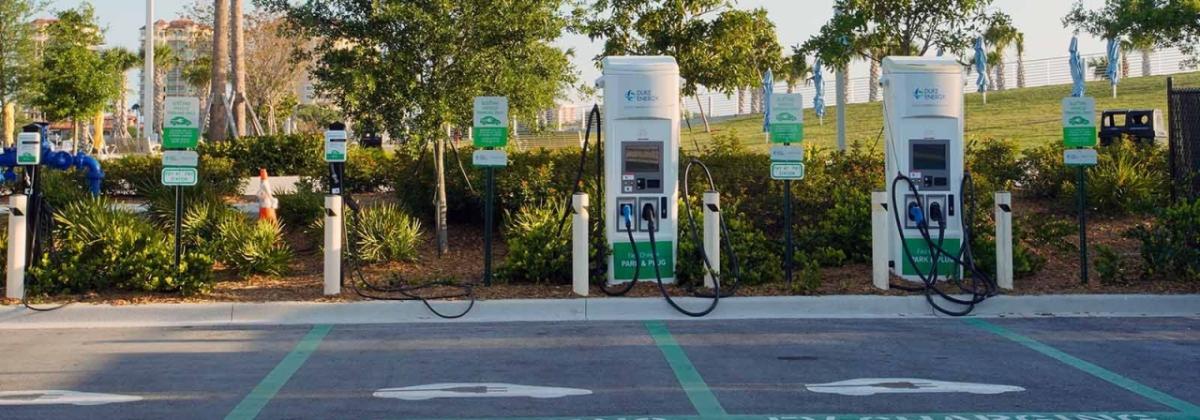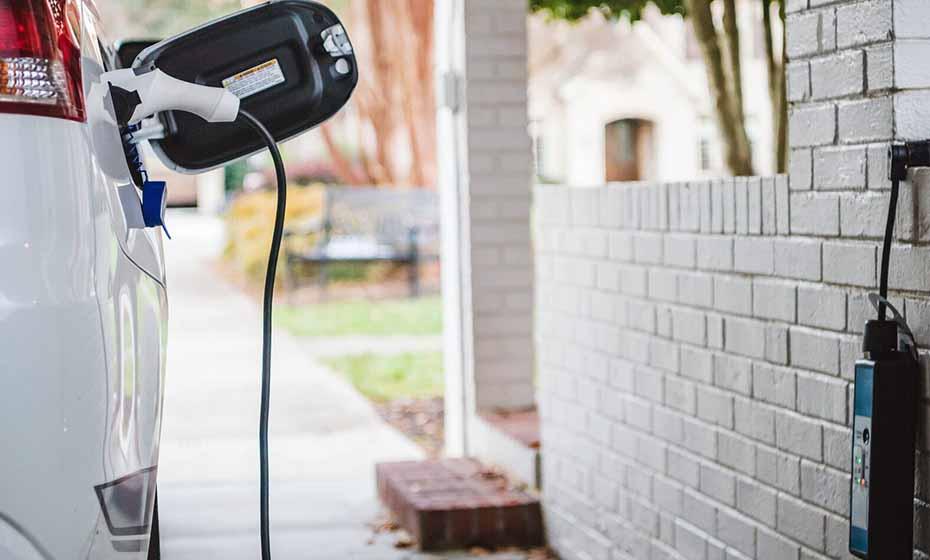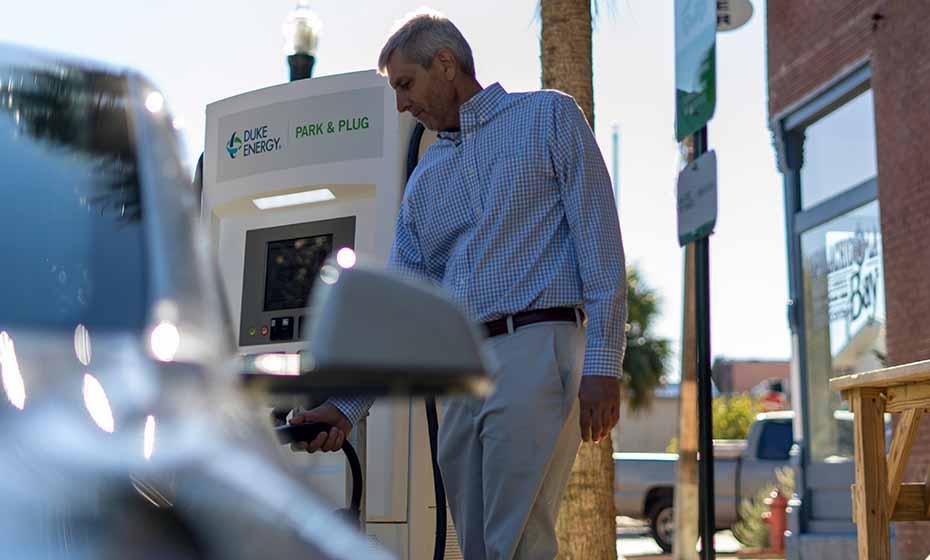Electric Vehicle Charging Stations Are Growing Nationwide
Here’s what you need to know about EV charging
There’s a cure for your range anxiety about electric vehicles: more charging stations.
Most EV owners charge at home, but across the nation, and especially in Duke Energy’s service areas, public charging stations are becoming more common.
“The big thing people need to understand,” said Michael Frost, who owns a Volkswagen e-Golf, “is to not be overly concerned with public charging accessibility daily, because people charge at home most of the time. I leave the house with a full tank every morning.”
The 82 miles of range gives Frost, a senior IT telecom analyst with Duke Energy in Plainfield, Ind., what he needs since “90% of my driving is around town, and I'm going right back to my house and plugging in.
“But for the times I do go farther, then I use public charging.”
Whether charging at home, at work or on the road, charging options fall under three categories:
- Level 1 is the standard outlet at home. On average, expect to charge at a rate of 4 to 5 mph.
- Level 2 is a dedicated 240-volt circuit like a clothes dryer. Most public chargers at supermarkets or offices use this. The average is 15 to 40 mph.
- Level 3 is fast charging, what you would find at a Tesla Super Charger or Electrify America DCFC station. Some fast chargers, Frost said, can replenish at a rate equivalent to 1,000 mph.
Duke Energy’s Customer Solutions & Strategy group is promoting EV adoption. They’re running electric transportation pilot programs in Florida, South Carolina and North Carolina. In its Florida service area, the company has installed more than 590 charging stations and is rounding out the Park & Plug Pilot with two fast charging installations on the Florida turnpike before the end of 2021.
“We are installing a fast charging network at 30 locations for a total of 60 fast chargers across our South Carolina territories,” said Jim Poch, electric transportation manager. “And we are offering an EV home charger rebate for Duke Energy Carolinas residential customers in South Carolina. The purpose of that pilot is to learn about charging behavior and how we can influence our customers to charge in off peak.”
“Consumers are hesitant to buy EVs because of the perception that there are not enough chargers available,” Poch said. “We are working to get past that as we deploy fast chargers and support installations from third-party charging companies.”
Duke Energy, along with five other electric utilities, created the Electric Highway Coalition to plan a network of charging stations connecting major highways in the South, Midwest, Gulf and Central Plains.
“We’re working with local and state officials on where they are located, from parking lots and parking garages. It can vary where they are but that’s step one,” Steve Young, Duke Energy executive vice president, said at a recent BloombergNEF conference. “Additionally, we’re working with other utilities … and committing to put charging stations along the highways in the Southeast, so people can get more comfortable with longer trips.”
Poch drives a Volkswagen ID.4 with a range of 250 miles.
“We want to eliminate the range anxiety in our service territory,” said Poch. “So that EV drivers can go from the mountains up in Seneca, S.C., down to Myrtle Beach with no worries.”
Find a charging station
- PlugShare helps you find EV charging stations in your area.
- Greenlots helps you search and find EV charging locations.
- EVgo offers DC fast charging on the road with more than 1,050 fast chargers in 66 metropolitan areas.
- Electrify America offers DC fast charging, Level 1 and Level 2 public EV charging.




